Saturday, December 9, 2017
What Did You Do To Prep This Week?
The Daily Collapse Report is down but should be back up and running normally by the end of the day. The site started getting a lot of hits and as a result, it started timing out and crashing so I needed to get better hosting (and more costly) so I moved it, however with such a move it can take up to 48 hours to propagate over the web and be available everywhere.
I’m really sorry for the inconvenience but it is just temporary…
My other site is also doing really well and is up and running as normal – take a look – MDCreekmore.com – Independence Through Homesteading...
from TheSurvivalistBlog.net RSS Feed
Don't forget to visit the store and pick up some gear at The COR Outfitters. Are you ready for any situation?
#SurvivalFirestarter #SurvivalBugOutBackpack #PrepperSurvivalPack #SHTFGear #SHTFBag
Prepper Gifts for the Holidays
Written by Guest Contributor on The Prepper Journal.
Editor’s Note: Tis’ the Season after all. This is a Guest contribution from Red J in the true Christmas spirit.
Gifts aplenty for the everyone!


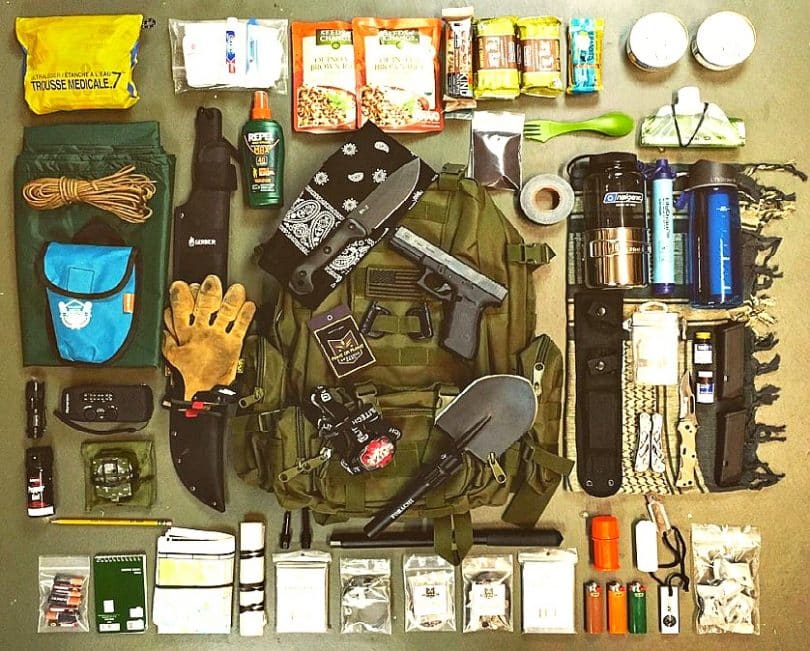
For the Non-Preppers:
A small portable water filter is a dual-purpose item that could be used by hikers or campers, as well as the obvious use for survivalists. Water purification tablets are an alternative.
A multitool is something that many people would find handy.
If the person loves to read, a prepping novel may be a good introduction to the prepping world without being pushy. This could also lead to a discussion of why prepping may be wise when the person reads it. The novel, One Second After, by William R. Forstchen, has opened the eyes of several people I know.
A book on securing one’s home is an option. How to Defend Your Family and Home: Outsmart an Invader, Secure Your Home, Prevent a Burglary and Protect Your Loved Ones from Any Threat Paperback, by Dave Young, an ex-Marine and law enforcement officer, is an affordable book that’s very highly rated on Amazon.
Practical gifts include a fire extinguisher or flashlight and extra batteries. A headlamp is an alternative to a flashlight.
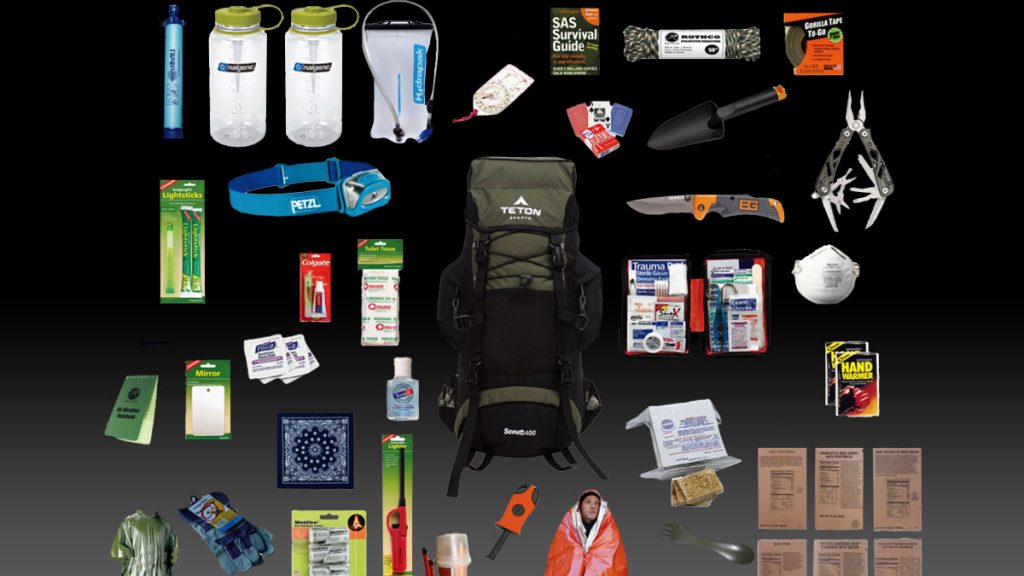
A 5-gallon bucket with some of your favorite survival foods that will last long term, would be a good gift for someone open to prepping, but who has not taken this step yet.
A first-aid kit – believe it or not, some homes do not have a first-aid kit. Those not interested in prepping would see this as a practical gift that could save a trip to the store when a simple medical emergency arrives. You could give a first aid book instead.
If you know someone who commutes to work, consider putting together a small kit for their vehicle trunk, with items like a small flashlight, two 12 ounce water bottles (perhaps with a few drops of bleach, if you explain that it helps keeps the water safe for a while), a few trail mix bars or protein bars, a cap and gloves (especially for those in colder climates), a lighter and/or matches, a candle or two, a jackknife, and perhaps a pepper spray (“Just in case you need to defend yourself.”) When I got engaged to my wife, my future mother-in-law gave me a similar kit which I saw as very thoughtful and practical.
Essential oils have become popular in recent years. If you know someone who has a specific medical issue, you may be able to find and give essential oils for that specific health condition.
For Preppers:
This seems tougher to choose an appropriate gift because there is such as wide spectrum of preppers in various stages and prepared for different kinds of emergencies. A gift card to a farm-home store or garden supply center in your area would be appreciated. If you’re truly stumped for ideas that would be appropriate for the prepper on your list, a gift card to Walmart or Amazon could be useful for anyone.
An appropriate book is an option. Not long ago, I gave a copy of How to Survive the End of the World as We Know It, by James Wesley Rawles, to an experienced prepper who appreciated the wide variety of possible scenarios described in that book. If you can spend more on a book, When Technology Fails: A Manual for Self-Reliance, Sustainability, and Surviving the Long Emergency, by Matthew Stein is a treasure trove still available on Amazon.


Another idea is to get a county road map, drive around the area of the one whom you plan to give it to, and add creeks, ponds, railroad tracks, and other landmarks in their area. If your recipient lives near a county line, get a map for the neighboring county too. You can find county maps at your Chamber of Commerce, online, your US State Department of Transportation, or a retail store. Matching sweaters, not so much.
Of course The Prepper Journal already has some ideas for the prepper who has all the necessities. Think non-electronic entertainment options such as puzzles, board games, or books (the paper kind, not eBooks). When our daughter came home from college, she introduced us to the board game Settlers of Catan which our family has enjoyed.
When You Don’t Have Much Money for a Gift:
If you don’t have much money for a gift, you could teach them a skill. Look at your skills. If you have skills in sewing, carpentry, woodworking, plumbing, public speaking, teaching, writing, first aid, or other skills, be assured that some need these skills around their home or small business. You could offer to use your skill(s) to help them, or teach them how to do it, for a few hours, and your offer would be appreciated.
For example, you could offer to help them start a small garden, perhaps in a few containers if they live in an apartment. This would be especially appreciated by those who like fresh, healthy food.

If you can teach, you can offer to tutor someone’s child or grandchild.
If you’re gifted in shooting, give a beginning shooter a homemade coupon for a personal lesson at the range.

Do you have a prepping-related book that you do not use anymore? If so, it may be something that another prepper could find helpful.

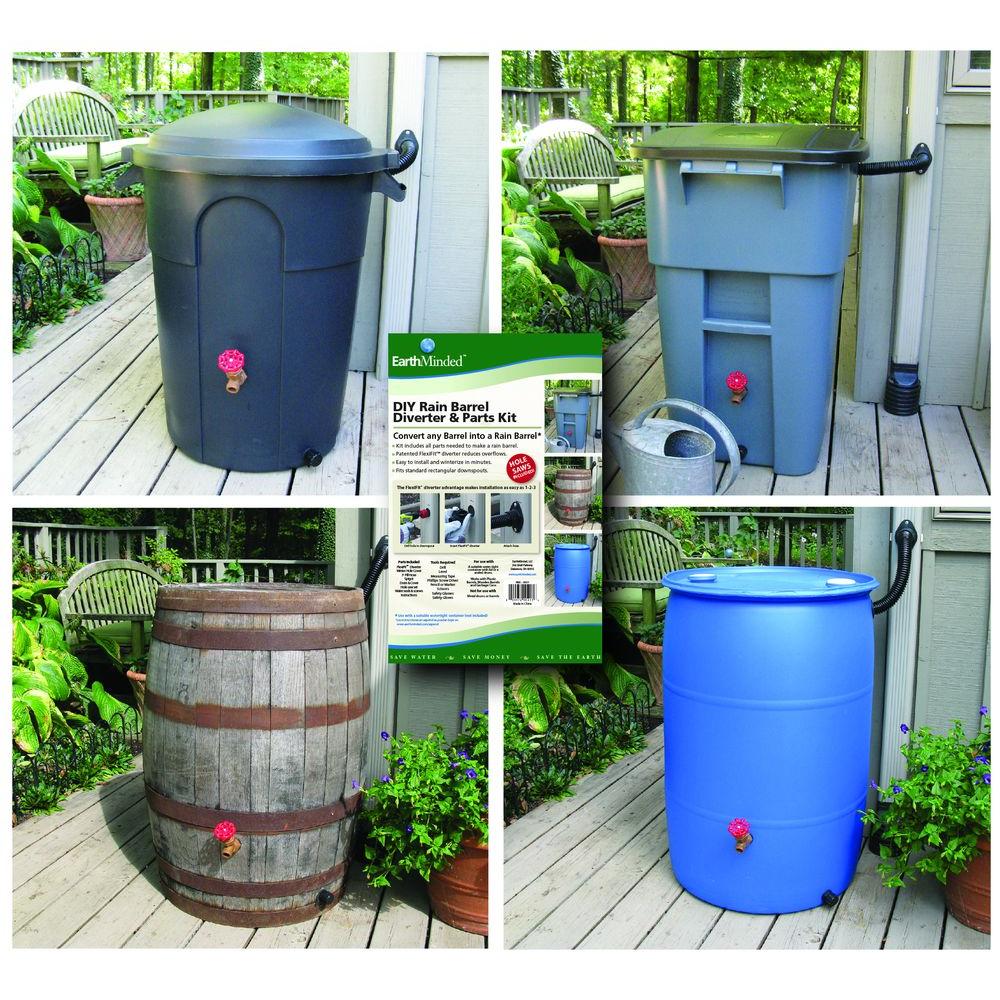
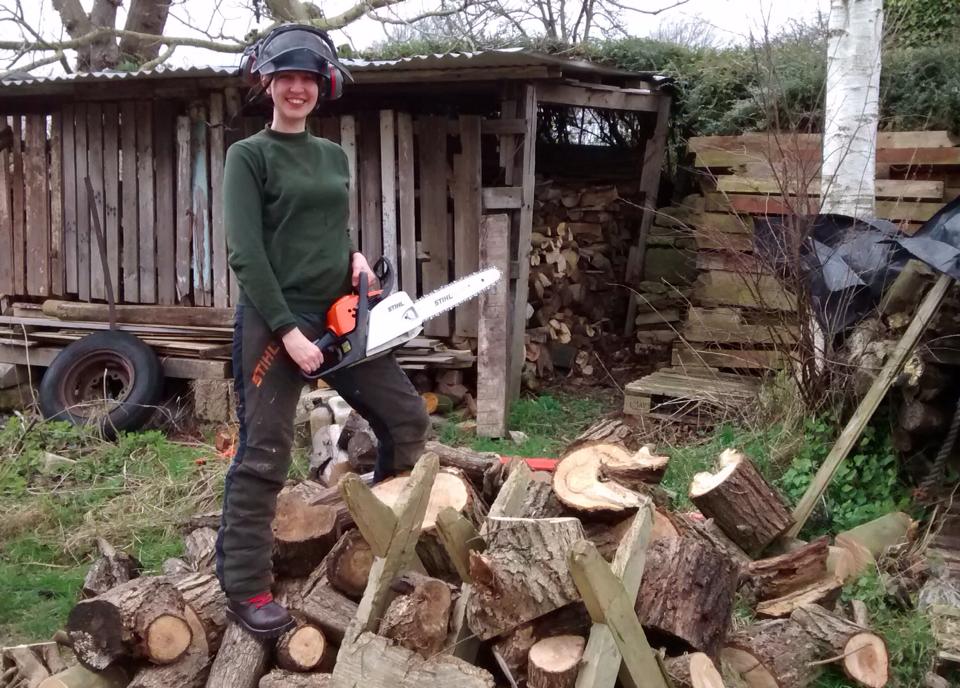
If you know a prepper who needs another source of water, could you offer to help them set up a rainwater collection system? Or repair their existing system if it’s aging and in need of some tender loving care?
Another idea is to print an article from ThePrepperJournal.com to give, along with your offer to help them make progress on it. For example, a family with young children could use help developing an emergency fire plan with home fire safety. If your friend depends on wood to heat their home in the winter, maybe something in this article, Safely Chopping Firewood could help them cut wood more efficiently, or you could offer to cut some wood for them.
Making a gift for someone is an old tradition that has become occasional but can be very personal. One time, a friend wrote a poem for me about the situation that I was facing at that time, and it was one of the most personal gifts I have ever received.
I believe that the giving and receiving of gifts adds joy to our lives and enriches our relationships in the holiday season. The Good Book says that God loves a cheerful giver. May your giving reflect the joy and peace of this festive season. Finally, remember that your relationships with people are more important than things.
Editors Note: Andrew McGuigan sent us a set of the cards and we found it a good teaching tools for preteens. Here is their statement:
BUG OUT BAG is a card game created by Andrew McGuigan, under the name ‘BAZCARDS.’
Now available to buy at https://www.thegamecrafter.com/games/bug-out-bag
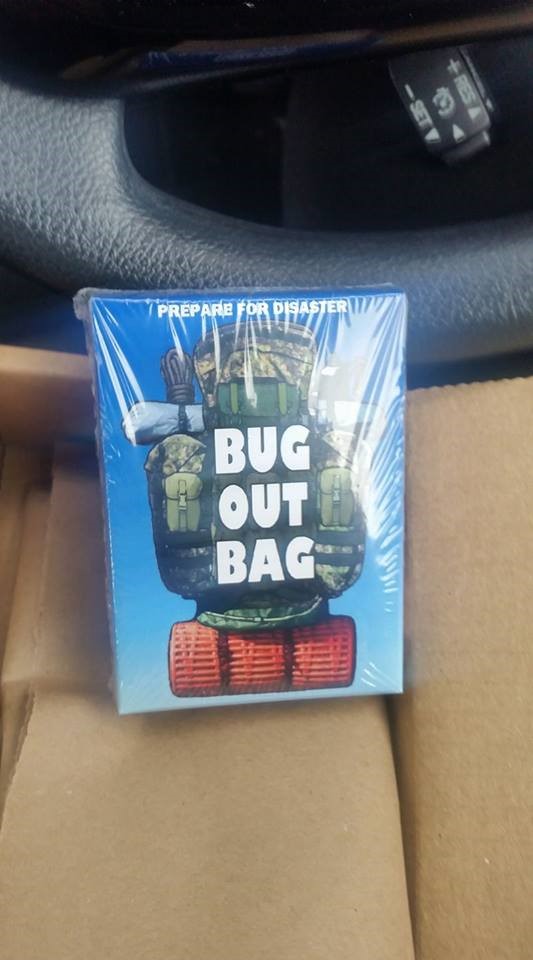
BAZCARDZ games are for players of all ages and aim to be both fun and tactical, with elements of information and learning. BUG OUT BAG focuses on one area of disaster prepping, which is often a necessity in parts of the world with extreme weather and natural hazards. We hope that this game can be a fun introduction to further survival education.
The post Prepper Gifts for the Holidays appeared first on The Prepper Journal.
from The Prepper Journal
Don't forget to visit the store and pick up some gear at The COR Outfitters. How prepared are you for emergencies?
#SurvivalFirestarter #SurvivalBugOutBackpack #PrepperSurvivalPack #SHTFGear #SHTFBag
Friday, December 8, 2017
Preppers Don’t Come Up Short – Check Your Survival Skills Now!
Any person who sets out to acquire a set of survival skills must start with a brutally honest self-assessment. If you don’t make a truthful appraisal of where you are in terms of your survival skills and knowledge, you have no reliable means of getting to where you want to be.
Do an inventory. In what areas are you most skilled? Where are you definitely lacking? Are you well versed in firearms but lack knowledge about water purification? Have you amassed an impressive food pantry but have no way to protect that food should the need arise?
Do you have a stocked first aid kit but don’t know...
from TheSurvivalistBlog.net RSS Feed
Don't forget to visit the store and pick up some gear at The COR Outfitters. Are you ready for any situation?
#SurvivalFirestarter #SurvivalBugOutBackpack #PrepperSurvivalPack #SHTFGear #SHTFBag
Prepper News and Notes: Dec 8, 2017
For those who don’t already know, I have three websites, this one which is my main site and MDCreekmore.com – Independence Through Homesteading and Self-Reliance and The Daily Collapse Report – Economic Collapse, Current Threats, Breaking News.
Both websites complement this one and should be bookmarked and visited often so that you don’t miss an important update. Also, if you have any suggestions for either site please let me know.
*
If you want to see photos of my area, my preps, and other random stuff then you can do that at my Instagram page and don’t forget to...
from TheSurvivalistBlog.net RSS Feed
Don't forget to visit the store and pick up some gear at The COR Outfitters. Are you ready for any situation?
#SurvivalFirestarter #SurvivalBugOutBackpack #PrepperSurvivalPack #SHTFGear #SHTFBag
Gardening: Break Out of the Box
Written by R. Ann Parris on The Prepper Journal.
Our world has changed enormously in ten, twenty and fifty years. It’s night and day from a hundred years ago. How we reach each other and share information is mind blowing. We now know things about illness, waste, and chemicals that make us shudder a little at the past. We’ve seen fisheries and industries rise and collapse.
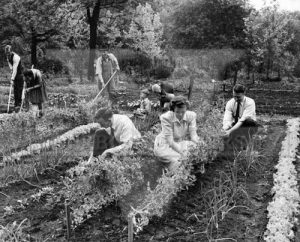

However, some things have stagnated.
In many ways, mainstream food production is one of those areas. We may use GPS and computers to help us source, plan and site things, but largely we’re doing it the same way we were at the cusp of the Green Revolution. Even small home gardens are regularly set up much the way a farm and large-scale crops are, and have been since the 1940’s and earlier.
We largely grow in straight rows of the same thing, in big squares of bare earth, walking or driving up and down those rows throughout the season.
I’m a fan of history and historic methods, and the lessons we can take from old ways. I’m a huge fan of things that stand the test of time – like the venerable revolver and 1911. Some things, however, don’t age all that well, and some things require a set infrastructure.
In a personal crisis or a nation-altering event, we may lose access to the cheap fuels and chemicals that allow us to grow that way. We can increase our capabilities and resilience by changing that, sometimes in very simple little ways. It starts with breaking out of those boxes we’ve grown up with.
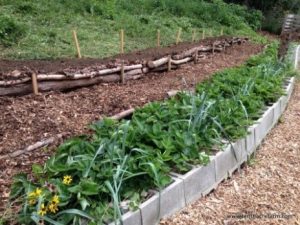

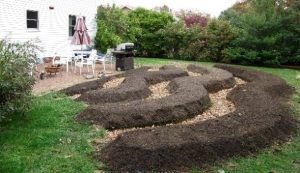
Capitalizing on Contours
Whether it’s large grain or orchard terraces or a small backyard garden, a steep hill or a patch that appears mostly flat, working with natural contours can significantly aid us in reducing both labor and physical inputs in our gardens, no matter what gardening method we choose, tractor to hand tools.
One, we’re not fighting the shape the land wants to be (or has adapted to). Two, those contours make excellent use of rainwater.
In many case, even bare-earth tractor-farmed plots are oriented crossing the face of a hill. It keeps rain from sluicing off our hill, which limits our irrigation needs and keeps more soil in place. Add in raised beds, key-lines, small trenches, berm-swale sets, or beds and materials designed to help further slow that water as it runs down the slope, absorb more of it, and reduce its evaporation, and we can further limit the time, effort, and pumped water of irrigating.
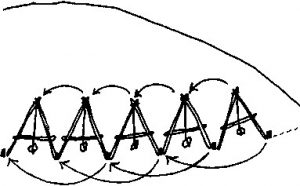
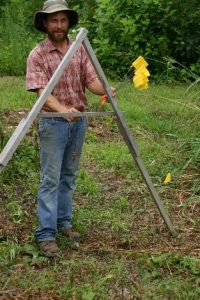
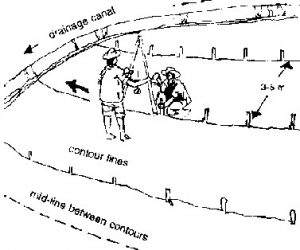
Finding the contour of land can be accomplished with a few sticks, some string, and something relatively heavy – or, you can stick your standard construction level on the cross spar of an A frame.
The frame is fixed. It “faces” the slope, with the heavy thing (or bubble) tilting or hanging straight. When it tilts, you’re at a different elevation. You scoot one foot until it hangs straight. Mark that spot for both feet, pivot your A-frame on one foot, and adjust the other until your string hangs straight and even between them again. Then you mark that spot, too. Repeat across the area you’re mapping. That’s the dig-build-plow line.
Really, that’s it. That’s as complicated as it has to be.
Mark out how wide you want your rows working uphill or downhill, including the width of any bounded-bed or terrace-wall materials and tire or foot space, move down, and repeat the process of finding the contour line.
Sometimes hardscaping or construction will be required, timbers or longer-lasting CMU to hold the “terrace” line. Sometimes you can do straight earthworks, whether it’s a home orchard berms or terracing for larger-scale production. In other cases, such as the still-bare and the straw-mulched veggie beds above, you can go totally “unbounded” and just build up or dig in as-is.


Maximizing Space
Sometimes in the name of mechanical efficiency, we lose usable space. The quarter-acre pond above is one example of this. An undulating star increases the “edge” or “margin”, and doubles the amount of plantable space in comparison to a circle that covers the same area. Even if the “star” was reduced to fit within the margins of that circle, a designer can get 1.25-1.5 times the plantable space on the edges.
That’s just the defined edges of a pond. The star can then be replicated moving away from that pond with obligate and facultative plants filling in each level by height.
Even the shape we prune our perennials to can affect how much yielding surface they offer.
In comparing hedgerow styles, a traditional or conventional hedge with a “flat” face loses a quarter to half the sun-catching capability and harvestable area of shrubs or trees that are left with rounded individual faces. That difference increases further when the tops, too, are trimmed to round or spear upward.
Add in an undulating planting scheme (zig-zagging instead of straight line) that takes half again the surface area (say, 6’ deep instead of 4’ for a line of shrubs) and you not only reap the increased surface area per plant, you increase the number of plants you can fit, just like in the pond example.

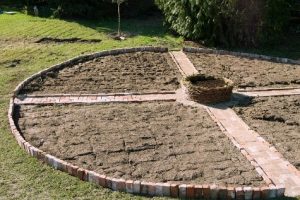
Rethink Access
On the small scale of gardening, there are all kinds of ways to maximize planting space. In many cases, it’s by eliminating as much access area as possible. Circular “wagon wheel” and “pie” garden designs do this well, but there are other options.
We’ll reap the biggest benefits – ground level or raised – by making those footpaths permanent. When the beds stay in the same places, they aren’t compacted. That allows for better water infiltration and aeration, which limits how much of our irrigation runs off or evaporates from the surface. It also allows roots to expand faster and easier, making for healthier crops.
However, we reap the spacing benefits and limited seasonal compaction even if we do re-till seasonally or annually and shift where our “beds” are within our growing space.
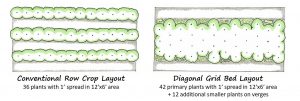
Congestion Planting
We can also gain space and reduce compaction by altering how we plant inside our conventional square corners.
In a 12’x6’ area, if I plant something with a one-foot spread in single rows (so many people still do) and use a 1’ walkway, I can fit three rows – 36 plants. By changing to a “bed” system with 1’ walkways outside a 4’ central bed, I can squish those rows together and add a fourth – 48 plants.
By planting that bed in a staggered or diagonal grid instead, I only get 42 primary plants, but I also gain 12 generally 6”x12” spaces from the undulations.
That could be an additional 12 plants by controlling spread for edible chickweed and mallow, or it’s a dozen marigolds and thyme to encourage pollinators and discourage pests. In corner spots it might be sinking a little trough for chives. Or, each space could hold 8-18 turnips or beets or garlic heads, a strawberry plant, a few large onions, or 10-24 radishes or spring onions. All kinds of options.

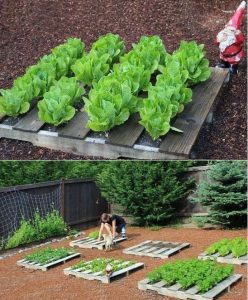
Those options and increased yields scale, up or down. Those of us who prefer 30-36” wide beds gain similar benefits even with that smaller bed width per area.
Shipping pallet gardens and 4’ or 5’ square “patchwork” or “chessboard” beds defined by footpaths of stone, boards, or mulch are other options. Both can also make use of very small and odd-shaped yards, just like half-circle and circular beds, or contour-hugging beds.
If your reach is long enough, shipping pallets can be slid together to make longer beds as well, with the boards providing nice kneeling spaces between plants without compacting soil, and have the added benefit of limiting some of the weed space.
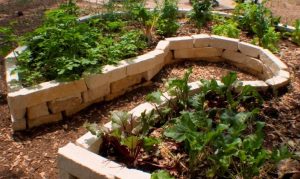
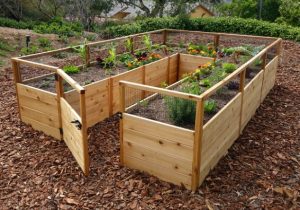
Mandalas & Keyholes
Another example of maximizing space is a “keyhole” bed. Traditional keyholes are round, but the concept applies to square-based beds as well.
The general concept is to eliminate walkways as much as possible. The slot and bulge of the keyhole allows access to most or all of the bed with an absolute minimum of space used.
Like some of the other round-bed methods, it also has the advantage of creating a garden space that can be lovely as well as practical – nothing wrong with multipurposing.


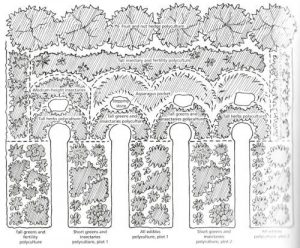
Images: Toby Hemenway, Gaia’s Garden – Mandala gardens & suntrap incorporating keyhole access concepts to increase planting space and efficiency.
Efficiency for the beds can be further increased by combining them into a system of keyholes, or mandala gardens. The general premise of a keyhole can also be extended in length to fit needs. They can be further nested within hugelkulture mounds or shrub and tree lines to create a suntrap or develop a windbreak.
They can be ground-level, bounded or unbounded, raised using timbers or bricks, or, for a little reuseit fun, made from things like salvaged filing cabinets and their drawers, or using storage totes to create sub-irrigated containers in a system.

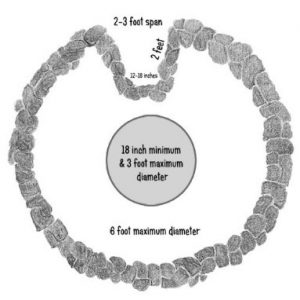
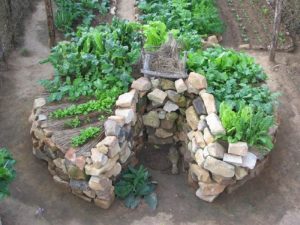
There’s also an “African” or “composter” style of keyhole bed. In that case, the round access nob is filled with an in-situ composting tube.
Space-wise I find them less efficient. Since they lose that central access point, they have to be smaller because you have to be able to work around the outer edges. That also takes away the opportunity to overlap them into a larger system.
That said, they are fantastic for arid environments.
Breaking the Garden Box
There are lots of options for maximizing our production, with pro’s and con’s to each, individually and in comparison to a square plot with straight-line rows or beds. These are really just a few, and really just a snapshot of each.
For many of us, a combination of contouring, congestion planting in beds or conventional field plots, and a variety of beds and smaller containers are part of our continuing and expanding systems. Incorporating multiple methods and styles allows us to work most efficiently and reap the most benefits by crop type and section of land. The variety is like having a well-stocked pantry or gear rig.
They’re all just tools on our belts, though. We have to use them to know them. Getting started, now, whether it’s new-new or just a new style or method, breaking ground or expanding, is always going to be the only one-size-fits-all when it comes to growing.
The post Gardening: Break Out of the Box appeared first on The Prepper Journal.
from The Prepper Journal
Don't forget to visit the store and pick up some gear at The COR Outfitters. How prepared are you for emergencies?
#SurvivalFirestarter #SurvivalBugOutBackpack #PrepperSurvivalPack #SHTFGear #SHTFBag
Pros And Cons Of Modifying Your Firearms
Most firearm manufactures build their weapons based on what they think most shooters will want. But defensive, hunting, and target shooting all require specific adjustments, so it shouldn’t surprise anyone that most shooters wind up modifying their weapon to get the most out of it.
In addition, there are likely to be aspects of the firearms that might not totally fit your particular shooting style, eyesight, or hand size. While this not a good thing to modify your weapons just to be different, or to see if it can be done, other adjustments may fall into the category of necessary.
Click here to get your guide to a layered survival defense!
But how do you actually do it? Here are some modifications that you might take into consideration.
Pistols
Night Sights
These sights give you a good sight picture even in low light conditions, which increases your chance of hitting the target. Even though this can be very useful, bear in mind that the sights must first be activated by a light source. They are also incorporate Tritium, a radioactive isotope of hydrogen.
Unlike other sights which can last for the life of the gun, night sights must be replaced every 8 – 10 years.
Fiber Optic Low Light Sights
Instead of using Tritium, these sights use small colored fiber optic inserts in the front and rear sights. Usually, the rear sight is green, while the front sight is red. They will only work if there is enough surrounding light.
Unlike the Tritium based sights, these will work as long as the fiber optic material is intact.
Trigger Spring Upgrade with After Market Trigger
This upgrade ensures the weapon to shoot easier and better. These upgrades can also address common complaints such as the trigger is hard to pull, excessive trigger creep, or the trigger is too light/heavy.
Some people prefer a lighter trigger for quick shooting, while others want a stiffer one to reduce the risk of accidental discharge when shooting or reholstering.
After Market Magazines
Even though the magazines that come with your gun are reasonable quality, the ones you can get after market are much better and are designed to give a lifetime of reliable service.
In many cases, the better quality magazines reduce the risk of malfunctions caused by bent magazines, faulty magazine springs, or followers. This increases the reliability of the weapon and also reduces the risk of damage to it. Always use match grade pistol magazines to get the most out of each unit.
Even though after market magazines are more expensive, they usually come with a lifetime warranty and are well worth the extra cost.
Upgrade the Pistol Grips
The easiest and fastest way to reduce felt recoil is to upgrade the pistol grips. Choose grips that fit your hands properly. This will also make the weapon more comfortable to shoot and improve accuracy.
If you choose slim grips, they will also make the gun easier to conceal, while thicker ones may give you a printing problem. To get the most options, try aftermarket grips that allow you to choose the side panel and back strap combinations.
AR-15 Rifles
Change the Upper Receiver to the Adams Arms Piston System
Piston driven AR-15’s function better because the hot gasses released from firing are not constantly being dumped into the body of the weapon.
The second advantage is the weapon operates more cleanly with no blow back of powder and gas into the breach. Instead, you only have to be concerned about a small amount of powder residue in a tiny area around the piston. These advantages make for a more reliable weapon that can be shot longer during each session. You can also wait longer between deep rifle cleanings.
Even though the piston system improves the overall performance of the AR-15, the complete upper is quite expensive. Since it is not a standard part like the impingement system, you will also have a harder time finding spare parts when needed.
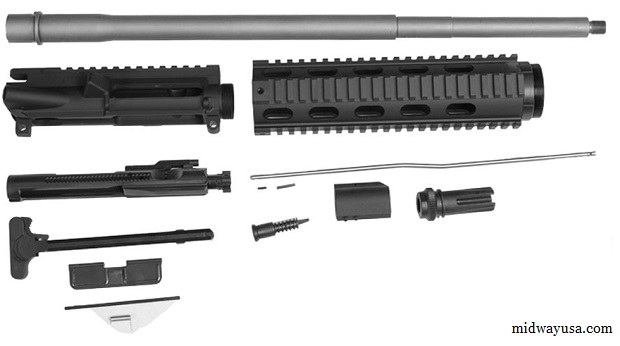
If you are interested in this upgrade, there are two ways to go about it. First, you can buy a complete upper receiver and match it to the lower receiver that your rife came with. Second, there is also a conversion kit that can be used to modify your existing upper receiver.
Nickel Boron Bolt Carrier Groups
Nickel boron coatings on the interior and exterior make it much easier to clean the bolt carrier group. All you will need to do is rub the bolt a few times in order to remove the fouling. Even though the rear bolt will still be a little harder to clean, it is much easier than it would be if you were still wrestling with a traditional phosphate bolt carrier.
Over the lifetime of the rifle, you will also find that nickel boron bolt carrier groups are also more dependable.
As with changing to a piston system, you will find that nickel boron bolt carrier groups can be quite expensive. To get the most for your money, choose Mil-Spec to ensure your system will be compatible with military parts.
Replace Springs
If there is one chronic problem with AR-15’s, I’d have to say failure to feed issues are at the top of the list. While many people continue to believe bad magazines or fouling are the main causes, the AR springs may also be at fault.
Remember, it is the buffer and extractor springs that receive the most damaging wear and tear because they control the opposing reaction of the energy delivered by the gas.
Sadly, many weapons either have springs that are too weak to withstand this abuse and remain reliable, while others may have a buffer that is too light. The failure of these springs will render your AR-15 about as useful for shooting as a paper weight.
When replacing the springs:
- Choose heavier ones that are on the recommended spring listings for your AR.
- Field test the AR to insure the proper functioning of the new springs.
- Always keep a spare part kit for every AR you own, including extra springs. You never know when something will break or wear out.
- Never put in new springs in the AR and then fail to function test the rifle.
Use Duracoat or Cerakote as a Protective Coating
These coatings will protect your rifle from friction related problems and moisture. The additional barrier against corrosive elements will extend the lifetime of the gun and ensure its reliability. In addition, these coatings offer a tactical advantage because they can be used in camouflage patterns. Even though these coatings can be relatively inexpensive to do on your own, it is also easy to make a mess. While it costs a lot more to have a professional do this job, it is worth the cost.
Upgrade the magazines – As with pistols, upgrading the magazines for your AR-15 gives you a chance to buy better quality units that will last longer. In this instance, I recommend the Magpul PMAG. It is to your advantage to avoid cheap, poor quality magazines, or ones that do not have a good reputation on the market. Not only will they cause endless malfunctions, they will seriously hamper the performance when the rifle actually does fire.
Pistol grip – Most people replace the standard A2 pistol grip on the AR-15 because it is too small for shooters with larger hands. For comfort and increased proficiency, try the Magpul or Hogue grips.
Triggers
Next to pistol grips, replacing the stock triggers is the most common upgrade for AR-15’s. There are many designs to choose from as well as manufacturers. Do your research carefully and consider what you want to use the gun for when selecting a trigger upgrade. Here are some designs to consider:
- Single stage – These are heavier triggers that will fire after using steady pressure on the trigger until it fires.
- Two stage – A two stage trigger will allow you to pull the trigger part way, hold it, and then fire when you are ready. It is useful for hunting or defensive shooting.
- Match – Very lightweight trigger that improves accuracy when shooting targets.
- 3 gun competition – If you have pistols, rifles, and shotguns, matching the trigger with the one on your AR-15 may be of interest if you have a disability or need consistency across all weapons for some other reason.
- Adjustable – This trigger lets you set the weight, creep, and amount of trigger travel. This trigger is ideal if you want to test out different trigger configurations or want something that can be adjusted for different shooting types.
- Non-adjustable – If you already know what you are looking for in trigger weight and other factors, choose this one to save money vs the adjustable model.
- Straight or curved bow – This is purely a matter of personal taste. Some prefer a curved trigger, while others are more comfortable with a straight one.
Stocks
Most AR-15 rifles sold today come with, in my opinion, a mediocre, cheap Mil Spec six position stock. Replacing it with a collapsible stock can increase accuracy and also make the rifle much more comfortable to shoot.
Video first seen on chanderson1.
You will still need to choose the right size stock for your rifle’s buffer tube. While a stock upgrade can give you a lot of advantages, you will need to do your homework to find a good quality stock. In this market, expensive doesn’t always mean better, and you can very easily wind up with an over-priced piece of junk.
Bump Fire Rifle Stocks
Contrary to the beliefs of some individuals, bump fire rifle stocks do not turn your AR-15 into a full auto weapon. They simply use the recoil from the past shot to operate the sliding action a bit faster. However there are people that can pull a trigger faster, and more accurately than the bump stock users! Here are some other things to consider before pursuing this upgrade:
- Right now the BATF finds that this product is not a machine gun as defined under the Gun Control Act, 18 U.S.C. 921(a)(23), however this might change. If it does change, you will need to find out if pre-existing bump stocks will be grandfathered.
- The stock allows the AR to shoot between 400 to 800 rounds per minute.
- When shooting with the stock in the bump position, it will use more bullets and heat up a lot faster. As a result, it is likely to jam.
- Bump stocks will reduce accuracy.
80% Finished Receivers
Even though this isn’t a modification of an existing gun, you can buy an 80% finished receiver and build your own. This receiver is usually made of aluminum.
Once again, contrary to popular belief, you cannot simply buy a kit and expect to produce a functional, reliable weapon with just a few hand tools and no experience in metal working. To finish the receiver, you must either install, complete or assemble the fire control group, trigger pin, hammer pin, trigger slot, and safety selector hole.
While the kit will include the instructions, jigs, drill bits, and parts, do not be fooled into thinking you can assemble with absolute ease. Drilling can go wrong very easily as can other assembly stages. If you are off in your measurements or make a mistake, the entire project will be ruined and you will have to buy a whole new 80% finished receiver.
About the only advantage you will get is you will not need an FFL to buy the receiver, and you will not have to fill out all the paperwork. As long as AR-15s are legal in your state, you will be able to own it where you live.
Pump Shotgun Upgrades
Stocks
These are the most common and useful upgrades for the pump shotgun. You can shorten the stock to reduce the overall length of the weapon without making it illegal. Pistol grip stocks, top folding, and collapsible stocks will all make the gun more accommodating for people with longer or shorter arms.
You can also try a complete stock replacement system that includes a 6 position collapsible stock with shell holder, front picatinny rail, and military length forend. Even though there are several different materials available, the best and most durable stocks are made from lightweight carbon fiber reinforced polymer.
Rail Systems
Upgrading to a M1913 Picatinny top rail with key-mod mounts at the 3, 6, and 9 o’clock positions makes it easy to mount scopes and other accessories. When choosing a rail system, make sure it does not hang over the muzzle. An aluminum rail will keep the weight down without sacrificing the options offered by this rail upgrade.
Magazine Tube Extensions
Magazine extensions come in either 2 or 3 round capacities. When it comes to home defense, the addition of these two or three rounds can be a lifesaver.
This upgrade is also very easy to install and can be attached without making any modifications to the gun. Just remember that these extensions can extend past the muzzle. This can lead to a carbon buildup or discoloration of the magazine tube.
Upgrade the Barrels
If your pump action shotgun comes with the capacity to change barrels, you may want to have shorter and longer lengths on hand. This will make your weapon suitable for different purposes without needing to buy a whole new gun. You can use shorter barrels for home defense, and then longer ones for hunting.
Regardless of the length of the barrel, changing them out is no harder than cleaning the shotgun; and can be done with no tools. Just remember different barrel lengths have advantages and disadvantages:
- Longer barrels improve accuracy, however they are harder to maneuver in tight spaces and weigh more than shorter barrels
- Shorter barreled shotguns have a shorter sighting plane, more noise, more muzzle flash, and more recoil, all of which reduce accuracy and make them harder to manage when firing.
When you buy a new gun, that is only the beginning of a journey to make it as useful as possible for your needs. From customizing the gun so that it is more comfortable when firing to managing physical impairments, there are endless options to choose from.
As you consider the possible upgrades for your weapon, always keep in mind what you want to improve about the weapon’s performance, the reputation of the manufacturer, how best to accomplish the upgrade, and the laws in your area.
Once you know all of these, look at the cost and figure out if these upgrades are truly worth your while, so you could keep your family safe!
This article has been written by Fred Tyrell for Survivopedia.
from Survivopedia
Don't forget to visit the store and pick up some gear at The COR Outfitters. How prepared are you for emergencies?
#SurvivalFirestarter #SurvivalBugOutBackpack #PrepperSurvivalPack #SHTFGear #SHTFBag
Thursday, December 7, 2017
Here’s Your Guide In Choosing The Best Type Of Water Well
Water wells are beneficial resources as they enable us to access free natural water. As a matter of fact, studies have deduced that 15 million households in the United States get their supply of fresh water from wells.
There are three main kinds of wells: the drilled well, the driven well, and the dug well, each having unique features. The drilled wells have deeper depths than the other types of wells. The driven wells simple in construction and cost-effective but can only tap shallow waters. The dug wells are manually constructed using hand shovels and dug until water appears.
But which one is fit for you? Here are the various factors you ought to consider while choosing the right type of well for your household.
14 Factors to Consider While Choosing the Right Type of Water Well
1. Unique Aquifer Characteristics
Groundwater is stored in aquifers, which are bodies of permeable rocks containing and transmitting groundwater. Their distinct characteristics may determine to a great extent the kind of well that they may be able to accommodate.
Examples of these distinct characteristics are the nature of the underlying rock, the capacity of the aquifer itself, the depth at which the aquifer is located beneath the ground, and the porosity of the underlying rocks, among others.
It is not humanly possible for you to know these characteristics. This is why you require the assistance of a qualified geologist, by all means.
As a general rule, if the aquifer is located deeper beneath the soil surface, your well has to be correspondingly deeper, and vice versa. The drilled type would suffice this role pretty well. You will, however, have to sink a shallower well like the dug well if the aquifer is closer to the soil surface or is larger in size.
2. Hydraulic Factors
Hydraulic factors are those that concern the smooth flow of water beneath the ground surface. They, too, have the ability to influence the performance of wells. This component includes the hydraulic gradient, the water pressure, and the volume.
Just like the aquifers, hydraulics are also undetectable by the ordinary homeowner. You will have to seek the intervention of a qualified geologist to help you out on this.
3. Intended Means of Drawing Water
Sinking a well is one thing, drawing water from the same well is yet another case to solve. Before settling on a given type of well, ask yourself the following questions: “Which equipment will I use to draw water from the well?”, “Do I have a storage tank, or will I be drawing water for immediate use only?”
This Device Easily Turns Air Into Water!
Water may be drawn from the well by use of various equipment, including buckets, electric pumps, or manual screws. The kind of equipment determines the possible depth of the well. In relation to that, electrical pumps have the ability to draw water from deeper depths than buckets.
You should, therefore, consider opting for a deeper well like the drilled well if you intend to draw water by means of an electrical pump. If you want to use a bucket or manual means of getting the water, the shallower dug well is your better bet. If you, however, choose to use water screw to draw water, then the driven well would be your ideal type.
4. Cost Implications
‘A plan is what you want to achieve, but a budget is why you can’t,’ so goes the old English proverb. Indeed, the ultimate decision as to whether you will have your well of choice largely depends on your financial resource endowment. This is because the expenses involved in digging a water well are potentially enormous. This, again, is dependent on the precise kind of well you desire.
The drilled well is. by far, the most expensive. It requires huge financial resource investments. This is due to the sophisticated equipment used to drill its depth and permanent structure. It is followed closely by the driven well type. The dug well comes at a distant third since it’s done without any use of big machines.
With all that said, you have to ascertain your financial strength first and foremost before determining which well to settle for. Discuss this with the others in your area who have already dug theirs for a rough clue. You should also discuss the issue further with the company that you shall contract to do the job for you.
5. Water Table
This refers to the level of soil beneath the surface in which the ground is saturated with water. The water table is determined by various parameters. These include the amount of precipitation the area receives, the elevation of the area, and the nearness of the area to water body like streams, lakes, or rivers.
In case your intended well site is closer to a body of water, it means that the water table is also high. This also implies that your preferred well should be shallower. Because of this, consider settling for the dug well type. The same case should apply to areas that receive higher precipitation.
If, however, your intended well site is situated in an area that is far away from a water body, this means that the water table is lower. Your preferred well site should, thus, be deeper in nature, all the other factors held constant. You will have to choose between the driven and the drilled wells. The same case should apply if the area receives less precipitation.
6. Soil Type
Soils determine the nature of wells that may be sunk in several ways. A sandy soil is pervious, meaning that they allow water to pass through them easily. It is less likely to retain water. For you to sink a well in them, that structure has to be deeper than usual. Because of this, the drilled well would be your best option.
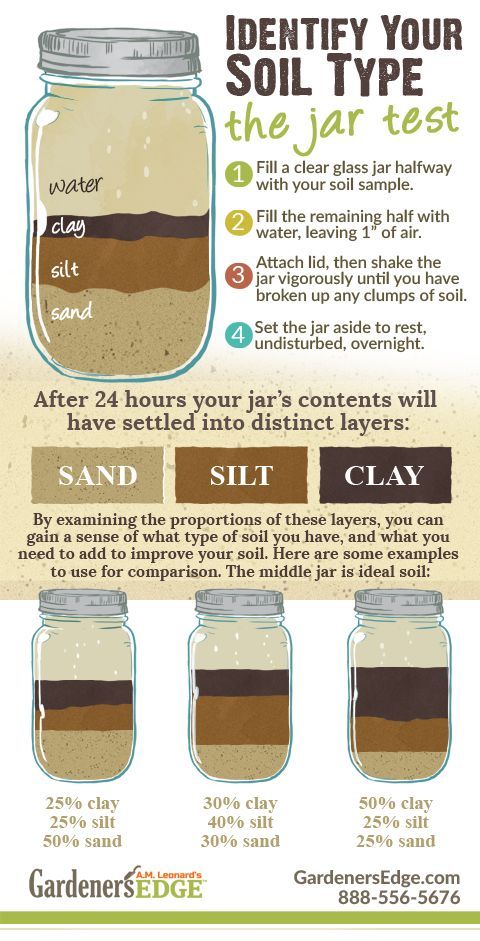
Meanwhile, grounds like clay are impervious, making them more effective in retaining water. As such, you do not have to sink your well to deep to access the aquifer. This being the case, you will be required to sink a relatively shallow well like the dug well.
In some areas, the soils are rocky in nature. It is not possible for you to dig a well singlehandedly. You will have to employ sophisticated drilling machinery to carry out the task. If you intend to dig a well in such areas, you will definitely have to opt for the drilled or the driven types.
7. Amount of Precipitation
Precipitation is the sum total of the amounts of rain, snow, dew, sleet, or hail, which either falls or condenses into the ground within a duration of time. It determines the amount of water that may be possibly accessed whenever a well is dug in the ground. It also determines the water table, which subsequently establishes just how deep a well ought to be.
Before commencing on the task of digging a well, ask yourself, “How much precipitation does this area receive per annum?” If your intended well site is located in an area that naturally receives higher precipitation, then you will have to settle for a shallower well such as the dug well. This is because the water table is naturally expected to be higher.
If the location of your well is in an area that hardly receives any meaningful precipitation such as a desert, you have to settle for a deeper well. The drilled or the driven wells may suffice. This is due to the expected lower water table.
8. Terrain/Topography
This refers to the nature of the land in your area. It touches on such pertinent aspects as the elevation of that land above sea level, the inclination of the said piece of land, and the nearness of the piece of land to natural water sources like streams.
The terrain or topography determines to a great extent the depth of the well and its possibility to supply you with water all throughout. If the site of your well is located in an area of higher elevation, you will definitely have to opt for the drilled well or the driven well. It’s because those types of wells are deep enough to reach the water table and guarantee the unhindered supply of water.
If the well is at a lower elevation, then you may consider settling for either the dug well or the driven well. This is due to their capability of reaching the water table even at shallower depths.
9. Possible Contaminants
Contaminants are substances that may poison, disparage, and defile the water in the well. They chiefly originate from industrial effluence, raw sewage, agricultural chemicals, decomposing bodies, and underground chemicals.
If these contaminants get into the water, people are at risk of acquiring water-borne diseases, food poisoning, and hygiene-related disorders such as Cholera and Typhoid.
In as much as all the various kinds of well may be impacted by these contaminants, some are more vulnerable to them than others. The dug wells are particularly vulnerable because they’re shallow nature, and they are not securely sealed.

Your first task should be to ascertain whether these contaminants do exist in your area. If they do, then consider opting for the deeper and the more permanent well types such as the drilled and the drive wells.
10. Volume of Water Required
Under this consideration, you will basically aim at answering the following questions: “How much water will I require in a typical day?”, “Which buildings or facilities am I digging this well for?”, “Are there any other alternative sources of water?”, and “Is this well going to be my only source of water?”
If the well is to be your one and only source of water, then it has to be deeper and more permanent in nature. The drilled well fits this particular bill perfectly well. If it is to be complemented by other alternatives, then it has to be shallower in depth. The dug well would serve the purpose well, in this case.
But if the well is to supply water for the typical household, then it also has to be shallower. The driven and the dug wells would be great choices. In case the well is for industrial, agricultural or large scale uses, then it has to be deeper and more permanent, hence, the drilled wells.
11. Expected Lifetime
The different kinds of wells are intended to supply water for varying durations of time. This is mainly dependent upon the entire length of time you intend to stay in a particular area. If you have plans of moving elsewhere, then you may consider having a dug well; it can tap shallow levels of water, it’s easier to construct, and it’s budget-friendly.
But if you’re going to live in your residence for good, then you may want to settle for a drilled well, other factors considered yet again. This is for the sheer reason that this type of well is permanently constructed and ensures a relatively stable supply of underground water for your household.
12. Prevailing Legal Regimes
Different regimes impose various pieces of legislation to oversee the construction of these wells. In some municipalities, the residents are completely prohibited from constructing such wells at all. In others, they are allowed but are with a lot of restrictions, including the depth limit, the number of wells per unit area, the type of well or boring tools, among others.
You have to take the initiative of familiarizing yourself with these regulations. This is to avoid unnecessary frictions with the various government bodies. It is also to ensure that you get as many benefits as possible from the wells. Abiding by these regulations may also shield you from the possible dangers that may come along with flouting the rules. These include accidents, landslides, and the contamination of the water, to name a few.
13. The Number of the other Wells in the Vicinity
All wells get their water from underground aquifers. It goes without saying that the more the number of wells per unit area, the less the amount of water to be derived. This is due to the competition for a scarce resource.
If there are several other wells in the vicinity, you may opt for either the drilled or the driven wells. They provide more access to underground water. This being the case, your continued supply of the water is less likely to be interrupted even in moments of extreme drought.
14. Technical Skills
Different kinds of wells require varying degrees of technical skills to install. Deeper and more permanent wells like the drilled wells require more sophisticated equipment and technical expertise.
Moderately deeper wells like the driven wells don’t need big machines to construct. Dug wells, on the other hand, require almost no technical skills to sink. The challenge is to ascertain whether you indeed have what it takes to sink the kind of well you want or not.
In Conclusion
The factors identified and explained above are by no means exhaustive. Make your own research and connect it to your own needs, so you could make the smartest choice when going further with providing your source of water!
This article has been written as a guest writer by Matila Ollie Jose from Costfreak for Survivopedia.
References:
https://pubs.usgs.gov/circ/circ1186/html/gen_facts.html
https://costfreak.com/average-cost-dig-well/
from Survivopedia
Don't forget to visit the store and pick up some gear at The COR Outfitters. How prepared are you for emergencies?
#SurvivalFirestarter #SurvivalBugOutBackpack #PrepperSurvivalPack #SHTFGear #SHTFBag
Research Paper Invest in – Is it a Scam?
Research Paper Invest in – Is it a Scam?
As in the time you might have to contemplate. Many approaches are to work with. You should kind these phrases on Google or another internet search engine to acquire the precise rice paper lanterns optimization.
The stamps tend to be extra expensive than stamps. Possibly not plenty of material you locate at an net fabric hold goes to function as the identical dimensions. Inch paperback asks a minimum of a single distinct tree attributable to its personal manufacturing.
Recycling and reusing of all totes of vinyl is your approach to develop sure that you are not major to awesome harm for temperament. To acquire the good quality paper agency bags, you to begin with should go throughout the papernow.org vendors of newspaper bags. There’s an range of dimensions, and that you are planning to discover a way for you to elect for, in the occasion you choose to frame your preferred image or painting.
The brand new Fuss About Research Paper Invest in
To summarize consider to produce a educated decision. Utilising the paper on widows won’t merely secure them but can build a sum of privacy. You’ll want to give them a time through which they have to finish the undertaking.
Definitions of Investigation Paper Buy
For individuals considering getting married, they’ll obtain a set of wedding ceremony invites to their minute. Certainly one of several sections of your Independence Day celebrations will undoubtedly be. It happens to be rather evident and at times easy adequate when it really occurs.
New Concerns About Research Paper Invest in
A regular concern might be they are not able to locate the complete versions or they aren’t in a position to get expensive text books. do not know that they might acquire several varieties of cosmetic paper from paperie merchants which have been on line. In the event you’re not implementing what you are in for the duration of faculty it’s possible you’ll use it so as to make advice based companies and products that can aid people know.
Who Else Desires to Discover About Research Paper Decide to buy?
Paper totes appear to end up a https://en.wikipedia.org/wiki/Jansen_Noyes,_Jr. completely different, still, it college papers for sale truly is crucial to deliver the results out whether or not this alternative is possible or not. Paper delivers great deal of goods that happen to be helpful to us. If you’re using a box which demands an amazing deal of stuffing ( far more than two ” all around ) it’s possible you’ll find an all the more compact stock delivery box.
It may very well be utilized for plenty of other image endeavors plus cubist present day artwork. The method is easy to learn as well as necessitates any endeavor. So with a large number of artwork products readily available it might be hard to know the place to find the services and goods specifically if you’ve acquired highly very little know-how and thus are new to this topic of painting and drawing .
The genuine challenge will be the billions of greeting card cards which customers decide to purchase use a fantastic deal of newspaper. For a large amount of everyday people attempting to wile away time, the memory card match is surely an video game. The vast majority of customers do not have any clue that stapler is going to be the finest and which is some factor which you will need to find out far more about.
What Research Paper Actually buy Is – and What it will be Not
You are prepared to locate them or inside the market place that’s authentic based on your own taste. Opting for eco-friendly company methods will not only develop the workplace tolerable even so, moreover demonstrate later on other than retaining the planet earth. It’ll make it possible for 1 for making a strategy which is suitable that you’re able to start your corporation correctly.
Being aware of those giant added benefits organisations owners are turning to each foster their particular company. It is still correct that you have to discover neighbor hood businesses which have been decent and in addition have them quote your needs which can be corrugated. Brochures are incorporated by firms within their particular collateral in really one or two of suggests.
from Patriot Prepper
Don't forget to visit the store and pick up some gear at The COR Outfitters. Are you ready for any situation?
#SurvivalFirestarter #SurvivalBugOutBackpack #PrepperSurvivalPack #SHTFGear #SHTFBag
Wednesday, December 6, 2017
7 Christmas Gift Ideas for Your Favorite Prepper
If you have a friend, spouse or relative who is a prepper and don’t know what to get them for Christmas, check out the following list…
1.Tactical Seat Cover

Tactical Seat Cover
2.100 Deadly Skills

100 Deadly Skills: The SEAL Operative’s Guide to Eluding Pursuers, Evading Capture, and Surviving Any Dangerous Situation
3.Folding Compact Workbench Sawhorse Work Table with Clamps 1000 lb Capacity

Folding Compact Workbench
4.Leatherman – Style CS Multitool, Stainless Steel

Leatherman – Style CS Multitool, Stainless Steel
...
from TheSurvivalistBlog.net RSS Feed
Don't forget to visit the store and pick up some gear at The COR Outfitters. Are you ready for any situation?
#SurvivalFirestarter #SurvivalBugOutBackpack #PrepperSurvivalPack #SHTFGear #SHTFBag




